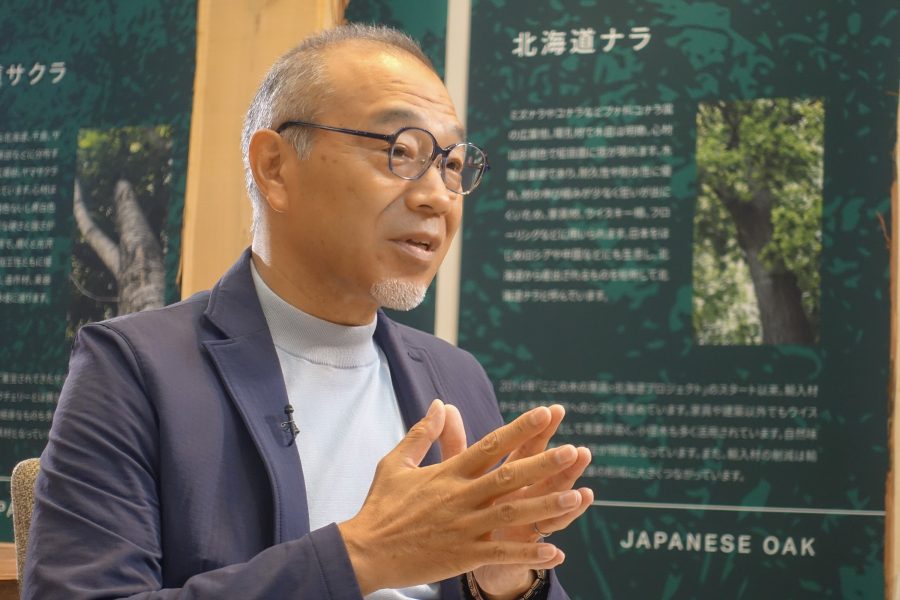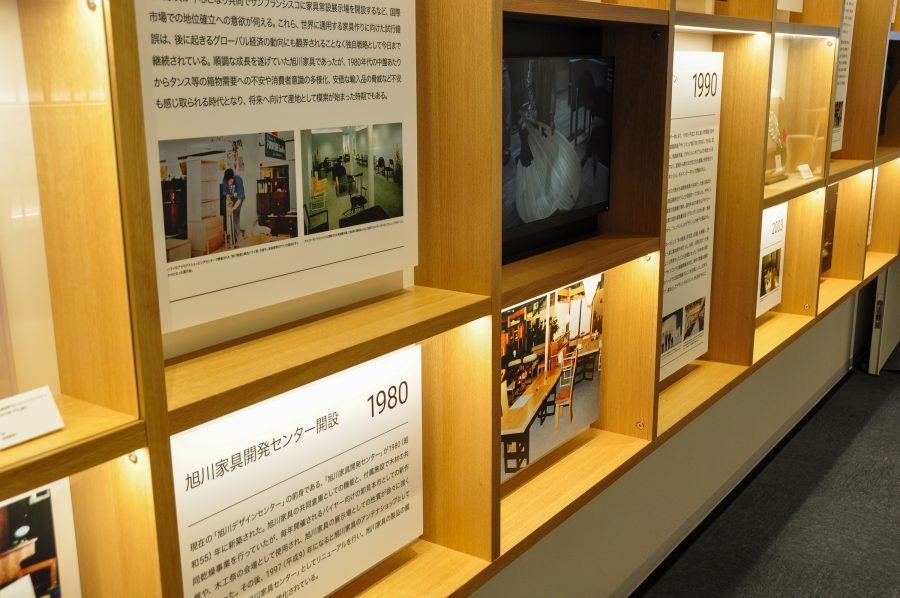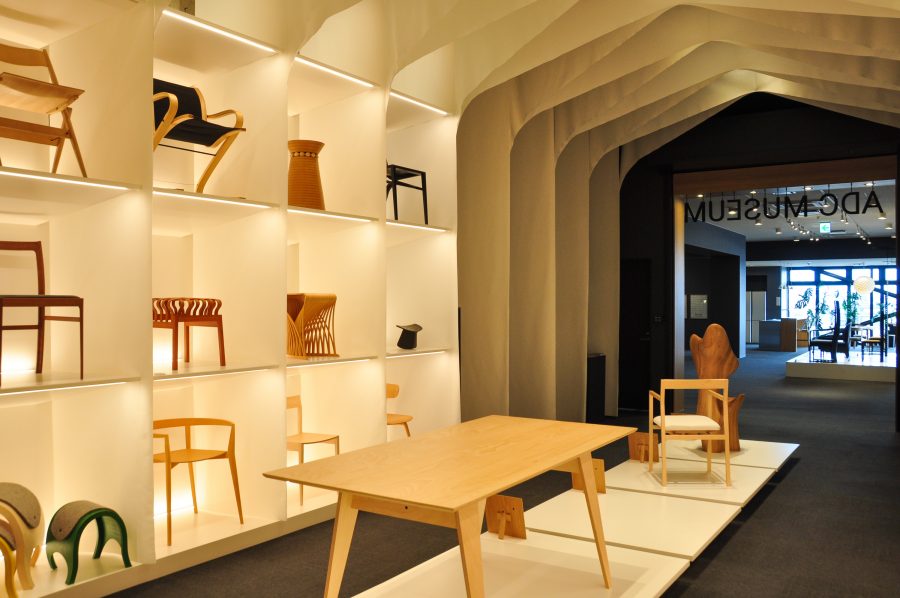
Among the member nations of the Organisation for Economic Co-operation and Development (OECD), Japan has the third-broadest forest coverage, ranking among the world’s most forest-rich nations. Hokkaido, in particular, accounts for 22% of Japan’s forested area. One of Japan’s top five furniture-making regions is Asahikawa, a town known for its wooden furniture made from those plentiful forests. As part of the Co-Design Challenge, Asahikawa Furniture’s chairs made from wood in Hokkaido will be provided to the Expo site, allowing visitors from Japan and abroad to experience the superior design and craftsmanship of Asahikawa’s furniture. According to the history, people first became aware of the superior quality of wood in Hokkaido through European wooden furniture.
The Hokkaido Oak is a type of fine wood oak that thrives in the harsh natural environment of the Daisetsuzan Mountain Range of Hokkaido. Strong wood with a high specific gravity and fine grain is produced as a result of the temperature difference between winter and summer, which can reach minus 40°C on the mountain in winter and almost 30°C on the ground in summer, and this creates differences in a pace for the trees to grow. However, oak trees were not widely used as furniture materials in Asahikawa after World War II. Instead, they were used for firewood and rail ties.
In 1962, Asahikawa City’s overseas training program sent three young woodworkers to West Germany to learn manufacturing techniques. When Minoru Nagahara, one of them, visited a port town, he discovered a massive pile of wood bearing the word “OTARU” on it. The wood was shipped from the port of Otaru and came from the Daisetsuzan mountain range in Asahikawa.
“He must have been shocked,” says Tetsuya Fujita, Chairperson of the Asahikawa Furniture Industry Cooperative. “Because of its exceptional design and craftsmanship, wood exported from the area where he grew up was being sold as high-end furniture worldwide. After learning of this reality, Minoru Nagahara spent three and a half years training in West Germany. After returning to Japan in 1968, he founded CondeHouse, with the hope of working on par with the rest of the world with designs and techniques that make the most of wood.” Fujita talks about the history of Asahikawa Furniture, which is closely related to the establishment of CondeHouse, where he currently serves as Chairperson.
The results of this training marked a major turning point for Asahikawa Furniture, which moved toward manufacturing that makes the most of premium wood in Hokkaido. Asahikawa Furniture took home the Prime Minister’s Award, the highest honor at the 10th Nationwide Good Furniture Fair (Zen-Yu-Ten) in 1965. When the WorldSkills Competition for technicians under the age of 23 was held in Spain in 1967, a furniture craftsman from Asahikawa represented Japan in the furniture category and took the second place. Asahikawa Furniture’s technical prowess gained international recognition. The representative for Japan at the same competition, which was held in France in September 2024, was also a furniture craftsman from Asahikawa, making this the ninth consecutive tournament in which Asahikawa has been selected to participate.
“Asahikawa Furniture is proud of the world-renowned high-level craftsmanship and premium wood from Hokkaido. The designs that can be realized thanks to this technical prowess are what makes it so appealing. Regarding the design, we are proactively working with a global perspective in mind, so someone who knew about our activities suggested that we participate in the Co-Design Challenge,” said Fujita. So, what does he mean by this world-leading design initiative?


Share this article


